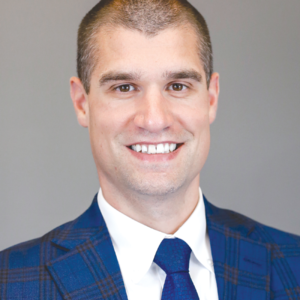While Billings is still talking about the Yellowstone International Airshow which was held in Billings in August, there are outcomes from it that are posing interesting opportunities.
Also, officials have announced that The Yellowstone International Airshow has been nominated for “Best Civil Small Airshow,” by airshow performers, and for “Best Marketing,” The awards are to be presented by the International Council of Air Shows at its convention in Las Vegas on December 6.
This is “the Pinnacle” enthused Matthew McDonnell, in making the announcement, who further commented about the Billings airshow, “It was very well done.” Something of an understatement.
McDonnell was one of the people who spearheaded the event, but he quickly presents a long list of volunteers in Billings who stepped up to make it happen. There were in fact thousands – often at some great expense to themselves – who demonstrated what this community can do.
The Blue Angeles crew said it was the best airshow ever, according to McDonnell. It was a “First Time Airshow and a Legacy Airshow.”
The coordination, planning and production of the airshow was second to none, and there are now people involved in the business of airshows who are asking if there are people in Billings who would go on a circuit to make “how to” presentations to other communities wanting to take on a similar challenge.
“That is a big compliment,” said McDonnell — and, the Billings group did compile “a notebook on what to do” in anticipation of the next airshow in Billings, which McDonnell doesn’t think will happen for another three to five years – “so we don’t wear people out.”
How to address the request is being pondered by McDonnell and others. “We would focus on smaller communities like Billings,” said McDonnell. He said he thinks it should involve a team of consultants, comprised of those who were in charge of the specific challenges. From throughout the community there were volunteers who oversaw the many aspects of putting together the event from sponsorships to marketing, from managing business to organizing volunteers, from security measures to food vendors, from parking to air traffic control, from road closures to emergency medical, from set-up to dispersing information….and much more.
McDonnell marvels at what people accomplished. They coordinated a world-class air show. And, “we were lucky to get all ‘the greats’ to help us out,” he said referring to the contributions of people like “Thumper” – Kendall Switzer — a retired Brigadier General, a past Blue Angel, who now lives in Bozeman.
And the depth of commitment was amazing, from volunteers who stepped up to take on a whole segment of the planning and no one had to worry about that aspect of the show again – people like Ben Flanagan, said McDonnell. For lack of a better description, Flanagan was the airshow’s superintendent, said McDonnell. He just got things done. For example, there was a big wind storm Saturday night that knocked a lot of things down. Flanagan was at the air field at dawn putting things back up. By the time everyone else arrived they didn’t even know there had been a problem.
And, “kudos” to the Blains at Billings Flying Service and to Edwards Jet Center – “They were the most accommodating,” said McDonnell, who went on to mention many others including one of the other lead organizers, Jake Penwell, as well as:
Reid Pyburn, who oversaw the organizing of Food and Beverage vendors; Chad Amstory, ground operations, who helped Flanagan with layout; Jodee Etchart, coordinator of volunteers; Robb Bergeson at Edwards Jet Center who moved planes as needed and got fuel – “We couldn’t have done it without them.” Then there was Shane Ketterling, Airport Assistant Director, who worked with FAA and security, “absolutely instrumental”; Sara Blenkner, Director of Development “kind of like a secretary”; Rob Moore, Executive Communication Director for the Board; Noah Kiprono, Finance CFO; Vu Pham, Legal Council and Secretary to the executive board; Jeff Stovall, in charge of security working with the Billings Police Department – and all law enforcement who had people working with the air show.
And then there were dozens of people on the board who attended an untold number of meetings. During the week of the event, all of the organizers and many volunteers met early every morning at the Northern Hotel to coordinate events and share information.
On the weekend of the air show there were hundreds and hundreds of volunteers who played a part in many different roles from shuttling people, serving food, monitoring gates, and overseeing dozens of details.
Billings and Montana were obviously ready for another airshow with it having been over 20 years since the last one . The Yellowstone International Airshow sold 11,500 tickets for each of the two days of the air show, plus 1000 VIP tickets. And that is not counting the attendance for the two days prior to Saturday and Sunday, nor does it include the volunteers and vendors who were on hand to serve the spectators. It is estimated that there were 30,000 people in total at the air show.
The 72 Blue Angels and support crew were invited by Billings to arrive early in order to participate in some special events especially for them. Fifty-five came to be hosted at the S Ranch in the Pryor Mountains and to play golf and go fishing. “They were enamored with Montana,” said McDonnell. The Blue Angeles and crew members commented on how much more welcomed they were made to feel in Montana compared to their reception in other states.
Of course, the Logan International Field was shut down during the show and practice times, but one aspect that was not shut down was emergency medical flights. Twenty-one medical flights happened without a hitch, said McDonnell. “I don’t think anyone knew they were happening,” He said he was impressed with how readily the Blue Angeles and crew accommodated the flights. “Knock it off,” is the command given to put everything on hold.
So, for at least, the next three years – “Knock it off.”




